When you go on an Africa safari for the first time, you might have noticed the Helmeted Guinea Fowl bird, and I used to call them “those African chickens” 🙂
I didn’t pay much attention to them anymore until I saw them again last year on a safari at Isimangaliso Wetlands Park, and I got curious: why did I think that they were some type of chickens haha?
Then I found out that people actually eat these birds and that they are even partly domesticated, let’s dive straight into this funny bird!
Identifying the African Helmeted Guinea Fowl
When observing the African Helmeted Guinea Fowl, pay attention to their size, as they are medium-sized birds with a plump, rounded body and a small, helmet-like casque on their heads.
The plumage of the African-helmeted Guinea Fowl is a captivating mix of black and white speckles, creating a visually striking pattern across their feathers.
Males and females have very similar features, colors, weights, and sizes.
It is hard to film the Guinea Fowl ==>
Additionally, the Latin name for the African Helmeted Guinea Fowl is Numida meleagris. The genus name “Numida” is derived from Numidia, an ancient region in North Africa, while “Meleagris” is a Latin term referring to guinea fowl.
In which countries can you see the Helmeted Guinea Fowl and what is its habitat?
The African Helmeted Guinea Fowl is distributed across various regions in Africa, and its range covers a broad expanse of the continent. These birds are found in countries such as Nigeria, Ghana, Senegal, Ethiopia, Kenya, South Africa, and many others.
Their adaptability to different environments has allowed them to inhabit a diverse range of ecosystems, from West African savannas to East African farmlands and even wetlands.
This widespread distribution emphasizes the species’ adaptability and its capacity to coexist with various ecosystems throughout Africa.

From Native Territories to Global Presence: The Guinea Fowl’s Journey
One remarkable aspect of the Helmeted Guinea Fowl is its widespread domestication beyond the African continent. The adaptability and hardiness of these birds make them well-suited for domestication.
While the helmeted guinea fowl itself isn’t directly domesticated, it is the ancestor of the domesticated domestic guineafowl.
Countries where domestic guineafowl are kept:
- Africa: Still widely kept in their native range within sub-Saharan Africa.
- Americas: Introduced to the West Indies, North America, Colombia, and Brazil.
- Europe: Present in countries like Greece, France, Italy, and Spain.
- Australia and Oceania: Found in Australia and some Pacific islands.
Guinea Fowls also hold cultural significance in various communities. Their feathers, meat, and eggs are often integrated into local cuisines and traditional ceremonies.
In some cultures, these birds are associated with symbolism and rituals, enhancing their importance beyond their practical uses. Their distinct appearance and vocalizations also make them a source of cultural inspiration, featuring in folklore, art, and even dance.
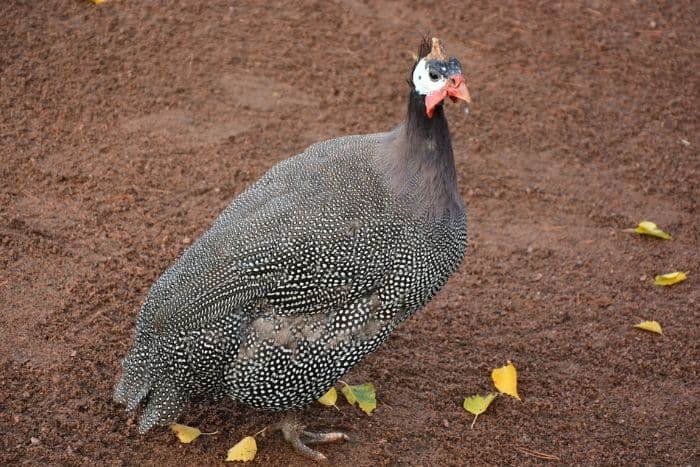
The Life and Times of Helmeted Guinea Fowls: Mating, Breeding.
During the breeding season, which typically occurs in the warmer months, these charming birds engage in captivating displays of affection. The males, with their striking plumage and helmet-like casques, showcase their best dance moves and vocal performances to woo potential mates.
The courtship rituals involve intricate stepping and head-bobbing, creating an entertaining dance that reflects their vibrant personalities. When trying to mate with a female, males might get aggressive toward other males and even injure them.
This aggressive behavior towards their own kind, can make it difficult to breed them yourself. (besides the challenges of predators like big cats)
Once a pair forms a bond, they remain monogamous throughout the breeding season.
Egg-laying follows, with the female carefully selecting a secluded nest to lay her speckled eggs. The devoted parents take turns incubating the eggs, and once hatched, the fluffy chicks stick close to their watchful parents, learning the ropes of the guinea fowl way of life.
The diet of the Helmeted Guinea Fowl, what do they eat?
The Helmeted Guinea Fowl is no picky eater, showcasing a diverse and eclectic omnivore diet that mirrors its adaptability in various environments.
These resourceful birds are natural foragers, enthusiastically pecking and scratching the ground in search of a wide array of delectable treats (just like regular chickens haha).
Their menu includes insects, seeds, small invertebrates, and even the occasional tasty weed. What’s fascinating is their peculiar eating habits – they have a knack for gobbling up ticks, making them not just charming but also handy allies in controlling tick populations.
( again, something they have in common with regular chickens, as they are used to let loose in people’s gardens to eat those little ticks to avoid Lymes disease, interesting, no?!).
Are you thinking about buying binoculars to have a good look at all the magnificent birds of Africa?
Distinctive call: The Helmeted Guinea Fowl’s sound
The Helmeted Guinea Fowl is known for its distinct and resonant call—a harmonious blend of honks, cackles, and squawks that echoes across the landscapes it inhabits. These vocalizations serve various purposes, from flock communication to alerting others of potential dangers. The unique cadence of their calls adds to the charm of these social birds, making their auditory presence as distinctive as their striking appearance.
Conservation status and efforts to protect wild populations
The good news is that the helmeted guineafowl is currently listed as Least Concern on the IUCN Red List of Threatened Species. ( on the contrary to other species of African birds )
This means they are considered widespread and abundant with stable populations and no immediate threats to their survival.
So, while no specific large-scale conservation programs are currently in place for the helmeted guineafowl due to their stable status, efforts to protect their habitats benefit them indirectly. This includes:
- Protected areas: Many helmeted guineafowl ranges overlap with protected areas like national parks and game reserves, which offer some habitat protection.
- Sustainable agriculture practices: Promoting sustainable farming methods that minimize pesticide use and habitat conversion can benefit not only helmeted guineafowl but also the overall ecosystem.
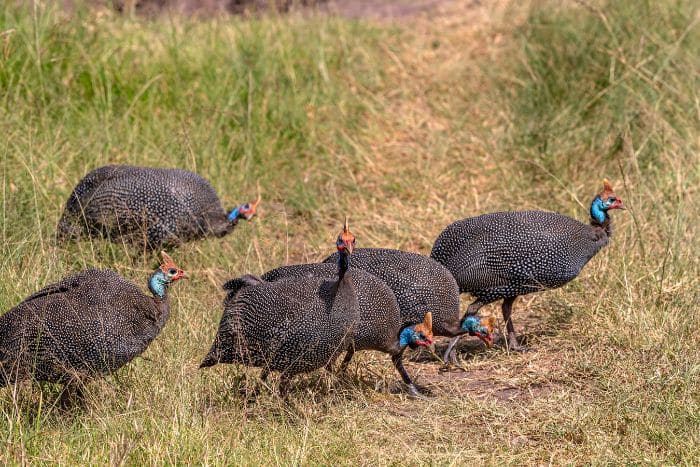
What is the lifespan of a Helmeted Guinea Fowl?
Below you can see their average lifespan, but it’s important to note that these are just averages, and individual birds can live longer or shorter depending on various factors like genetics, health, environment, access to food and resources, and let’s not forget predators like crocodiles, big cats, or even dogs.
Helmeted guineafowl in the wild:
- Average lifespan: 5 years
- Maximum recorded lifespan: 12 years
Domesticated guineafowl:
- Average lifespan: 8-12 years
- Maximum recorded lifespan: 15 years
Helmeted Guinea Fowl birds can fly!
While helmeted guineafowl are primarily ground-dwelling birds, they indeed possess the ability to fly, albeit not extensively used. Here’s a deeper dive into their interesting relationship with flight:
- Short bursts: They mainly engage in short, low-altitude flights, typically covering distances of less than 100 meters.
- Escape and navigation: These flights mainly serve as escape tactics when threatened by predators or for navigating obstacles like fences or bodies of water.
- Reaching roosting sites: They may also fly to reach preferred roosting spots in trees or on higher ground.
- Physiology: Their wings are relatively small compared to their body size, making sustained flight less efficient.
My Final Conclusion.
I hope that you found this article on the Guinea Fowl bird interesting, but if you have any more questions about this bird, please feel free to leave them down below in the comment section or join me on my social media channels below for more stories, pictures and even videos on my travels to the fascinating continent of Africa!
I wish you happy travels!
Kind regards,
Lizzy
I now have a YouTube channel as well!
YouTube
Hello Africa travellers!
Who am I? Well, the least you can say is that I am quite crazy about Africa, its nature, its climate, its culture, and more.
As a young woman in my twenties, I had already traveled to several African countries by traveling along in an overlander on my own and mostly camping ( or glamping ) and just fell in love with the diversity of it all.
So much, so that at the age of 26, I went back to university to study biology, which, unfortunately, I couldn’t finish because of health reasons (yes, I got sick from a tropical disease, oh cynicism). But this did not stop my dream of traveling back to Africa several times, and I still do.
My dream was back then to leave Europe and go study animal behavior, especially the elephants (sure, that’s every girl’s dream haha), but I am also very much intrigued by hyenas and other “ugly African animals“.
So, I “kind of” have a little bit of a scientific approach to my articles, when I write about African birds, for example. And most of all: the passion.
But life goes on, you move from one side of the country to the other, you get sick again and top it off with lower back problems, and before you know it, you are over 50 hahaha!
Now, I still travel to Africa, but take it a bit “easier” than the good old camping days, and stay in comfortable, yet affordable accommodations, together with my husband Wouter.
These are some of the countries I have traveled to: Kenya, Tanzania, Zanzibar, Malawi, Zambia, Zimbabwe, South Africa, Namibia, Botswana, Tunisia, and a little bit of Lesotho LOL .
While clearly not being African territory, but Spanish, I also visited Gran Canaria and Tenerife, and location-wise, I consider them “African”, because of their climate and nature, sue me :-p
The last trip I took was to South Africa in the year 2023, and it sure got the fevers for Africa back! From the Barberton mountains to the Drakensberg and the Southcoast, one month wasn’t enough at all to see the whole country, so we’ll be back! At ease and with a little bit more luxury than in my younger days haha!
I wish you happy travels!
Kind regards
Lizzy

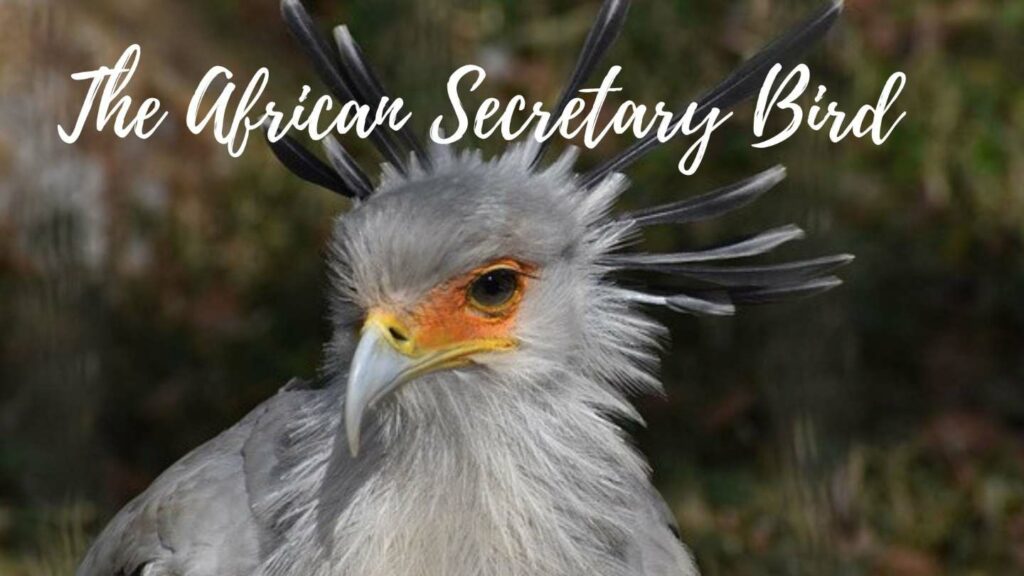
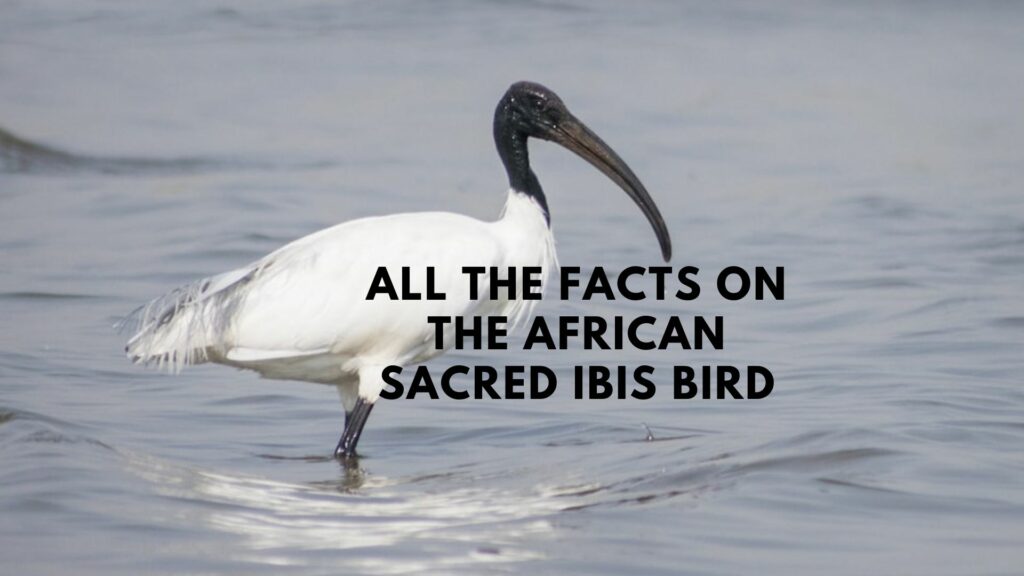
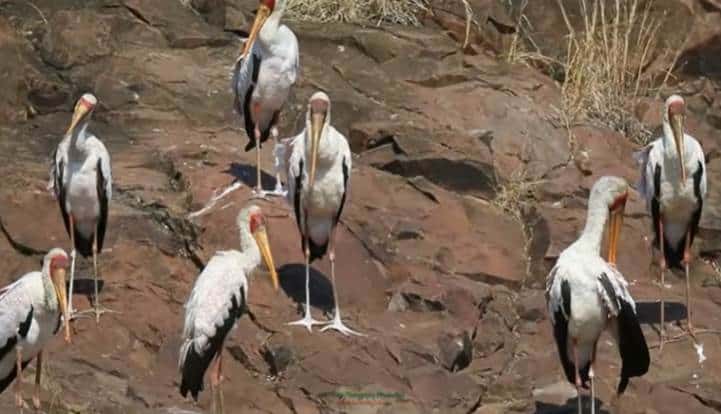
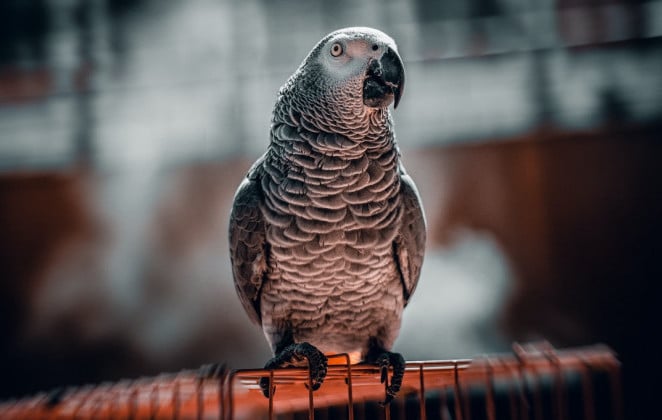
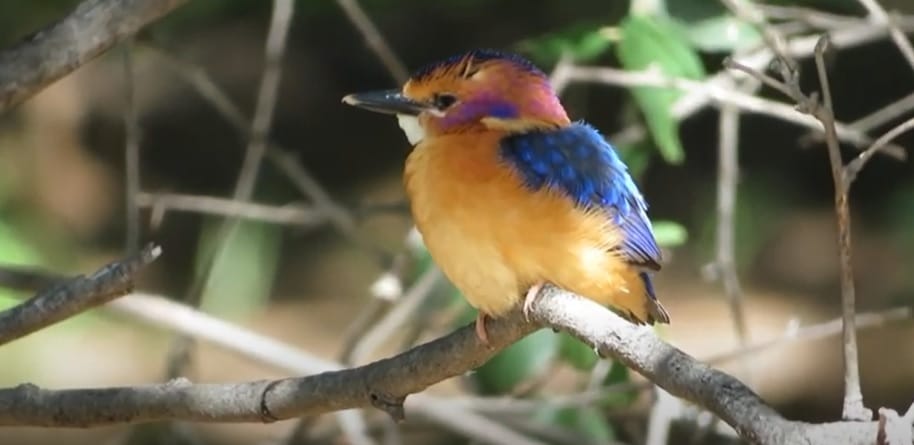

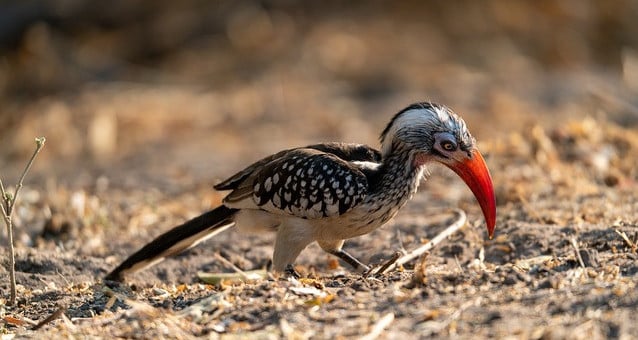


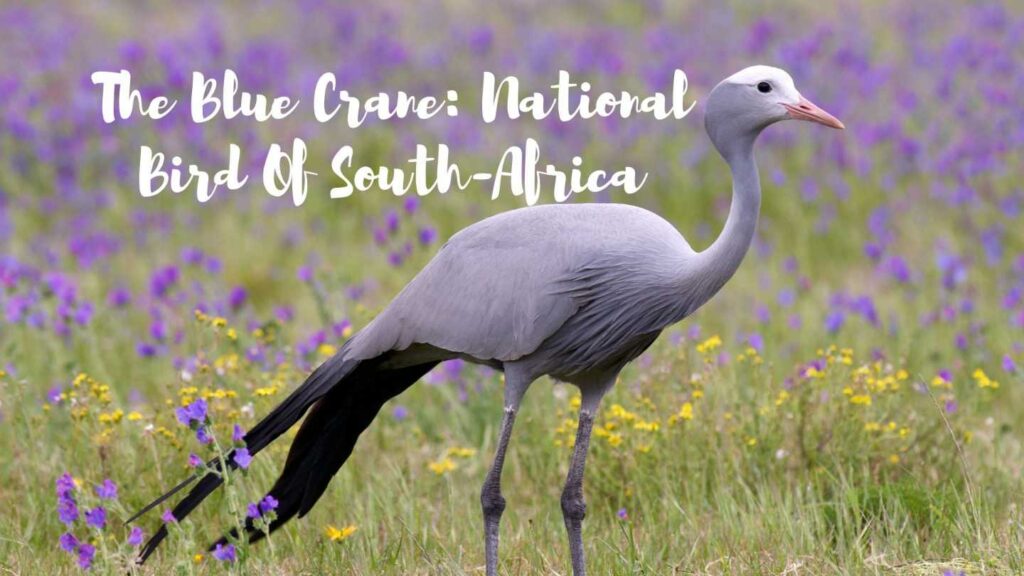
It’s fascinating to discover that these birds, initially mistaken for chickens, have such a diverse presence across Africa and even globally through domestication.
The details on their distinctive appearance, quirky mating rituals, and omnivorous diet add a charming touch. I particularly appreciated the cultural significance section, highlighting how Guinea Fowls are not just practical creatures but hold symbolic importance in various communities.
Hello JR
Thank you for your comment and I am happy to have informed you enough on this peculiar bird 🙂
Kind regards,
Lizzy
Hi Lizzy, I can see why you call the helmeted Guinea Fowl the African chicken :-). That’s a very apropos nickname, based on the way they look.
To be honest, until I read this article, I’d never heard of the helmeted Guinea Fowl. However, I now know how to identify them and I know enough about them to actually talk intelligenly with someone about them, should the subject ever come up.
I hope you’re not offended by my question, but I’m curious, do people eat this bird? If so, does it taste like chicken?
Bob
Hi Bob!
Haha, I know right, they look very simular! 🙂
Well yes, as stated in the article, the descendants of these birds are used for breeding and recipes all over the world, although there can be some issues with aggressiveness between male Guinea Fowls, not always easy 😉
Thanks for your comment!
Lizzy